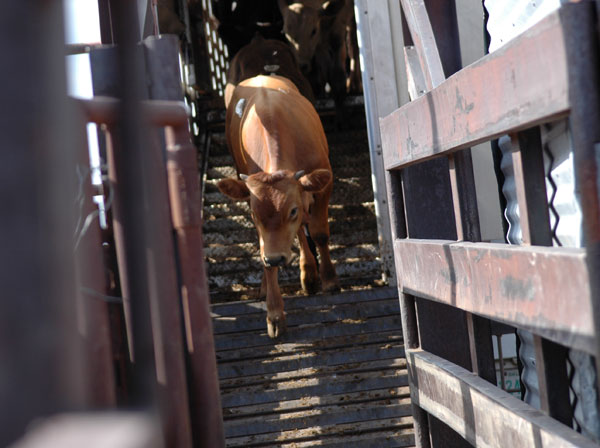Time to price calves is now
Will it hurt worse to give up potentially higher prices or gamble that it moves lower?
June 5, 2017

“If you’re going to price spring calves for the fall and winter market, I’d sure get it done,” says Derrell Peel, Extension livestock marketing specialist at Oklahoma State University.
He made that observation as the market headed into the middle of May, a week after the highest fed cattle prices of the year, and while regional calf and feeder cattle prices continued to climb higher year over year for the first time since 2015.
All of those prices could be lower by the time you read this — but not necessarily. Either way, odds are that current prices are higher than you guessed before calving started.
It’s been that kind of year: hard to call, but pleasantly so, says Peel.
“We’re seeing the remnants of what cattle feeders were setting up during the last half of last year, pulling cattle forward,” Peel says. Slaughter levels continue higher year over year, but the market continues to offer feeders incentive to market cattle on a timely basis, given the wide discount between front-month Live Cattle futures and the cash market.
As fed cattle prices increased, so did the marketing incentive. All of that helped depress carcass weights and dilute expected beef production.
At the same time, Peel points out that domestic and international beef demand remains positive, especially considering growing supplies of pork and poultry.
In broader terms, market fundamentals remain strong. But, prices were feeling toppy heading into the second half of May. Thus, the encouragement from Peel and other livestock economists to consider price risk management sooner rather than later.
“I believe it’s time to get some price floor insurance purchased on fall calves in particular,” said Stephen Koontz, agricultural economist at Colorado State University, in an early-May issue of In the Cattle Markets. “The fundamentals are there but are short-term, and will not likely persist through the summer. I do not believe these [pricing] opportunities will continue until cow-calf enterprises have the chance to market the current calf crop on video auctions.”
The broad range of price risk management tools include everything from forward contracts, to Livestock Risk Protection insurance, to a straight hedge with futures, to options, to both simple and elaborate combinations of various tools. It depends on resources, specific goals and appetite for risk.
Koontz offered the following example, based on mid-May markets:
“October feeder cattle options are very pricey at-the-money; after all, it’s a long time until October. But a put with a $130 strike price is trading around $2.35 per cwt. That’s $1,175 without commissions to buy a floor at $130.”
More liquid options are at higher strike prices and have higher premiums, Koontz explained. “A price floor at $130 plus a reasonable Colorado basis of $20 per cwt on a steer calf weighing 500 to 600 pounds is a cash price floor of $150 per cwt. Compared with last fall, that’s a number that’s hard to argue with.”
Retained ownership is another option, be it through the stocker phase or feedlot. For that matter, more value could be added to cows leaving the herd.
“If you have forage or feed resources, you have to figure out the best use for them,” Peel says. “For instance, do you sell your cull cows, or do you keep them and use some of your lower-quality feed? I think all of these things have to be on the radar.”
If you’re still wondering whether to protect current prices, or to what degree, Peel remembers advice he received years ago from a grain marketing peer: “Will it hurt worse to give up a potentially higher price, or gamble that the price moves lower?”
About the Author(s)
You May Also Like





